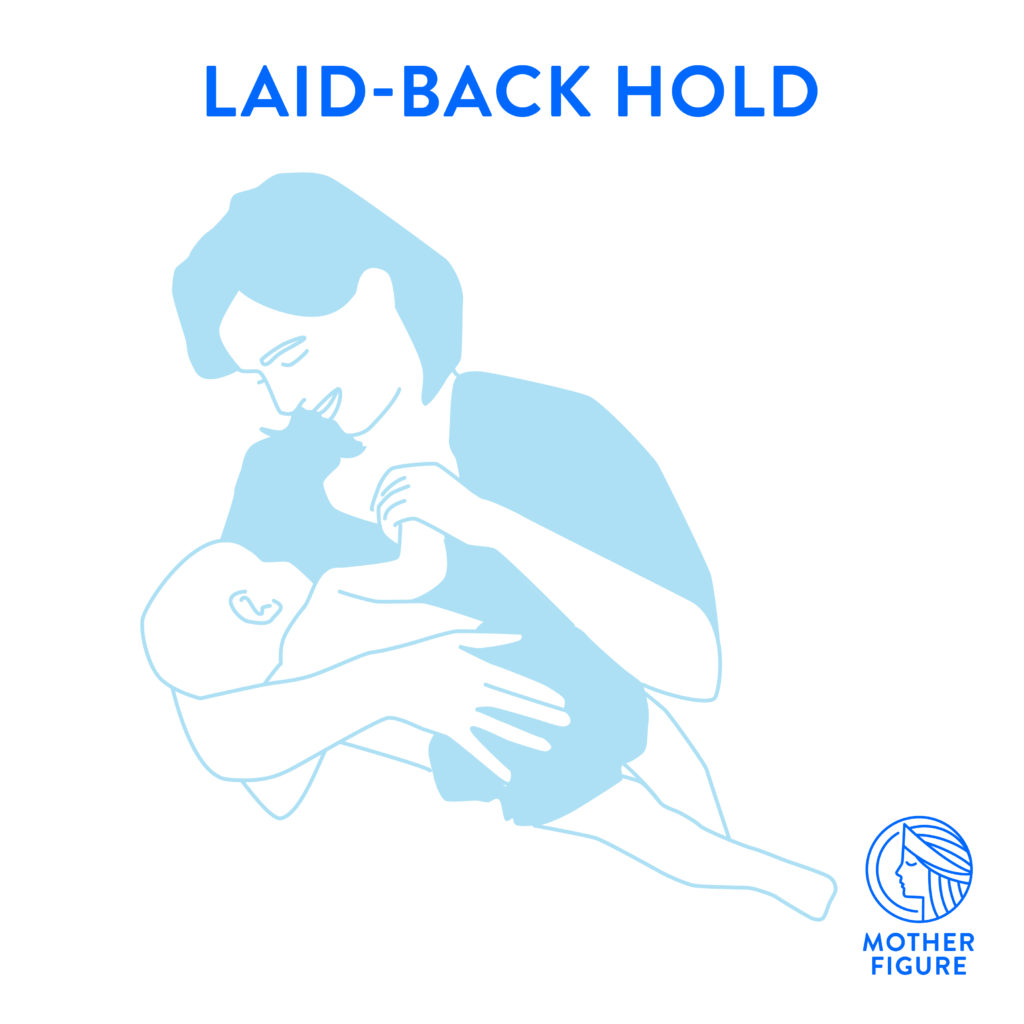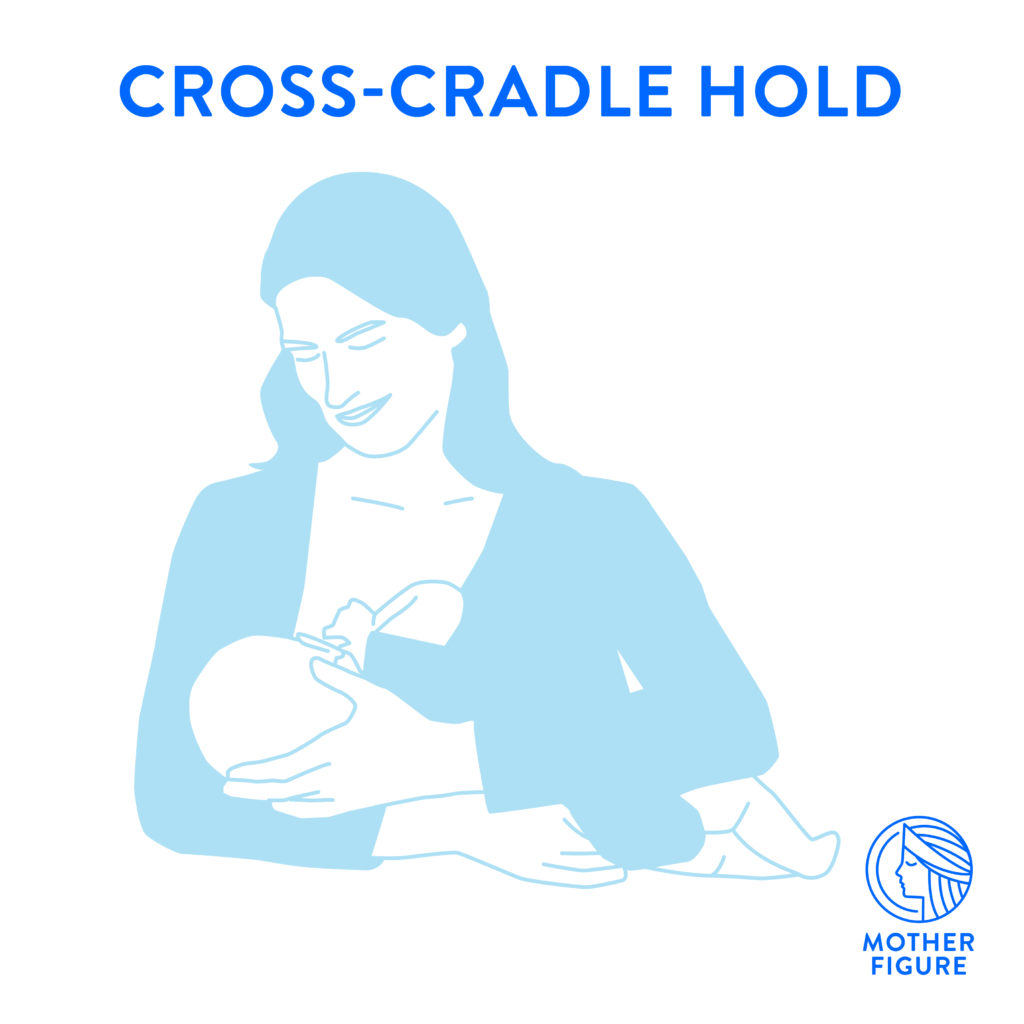It can take some time to get into the groove of breastfeeding—especially when it comes to finding comfortable breastfeeding positions that ensure a good latch. In fact, finding the best breastfeeding positions can have a huge impact on developing a positive breastfeeding relationship.
As KellyMom, one of our favorite resources on breastfeeding, notes, above anything else it’s important to make sure that the position is effective and comfortable. “Pain (particularly after the first two weeks) and/or ineffective milk transfer indicate that something needs to change, and the first suspect is ineffective latch/positioning.” The opposite is true, too: If the baby is gaining weight and you’re comfortable, then even if you can’t seem to manage football grip breastfeeding, you don’t need to worry.
All that said, you might just need a little bit of help finding comfortable breastfeeding positions for you and baby. Here are some of our favorites—and some advice for how to find the best posture for you and your little one.
Some notes on latching: The key to the best breastfeeding positions
No matter what position mom and baby are in, the key is that you’re able to get a good latch. So understanding the mechanics of the latch itself may be helpful. Babies use their lower jaw and tongue to pull milk from the breast — not the nipple — which is why the baby’s lower jaw needs deeply latched, which can be tricky due to babes’ recessed chins.
To get baby’s head in the proper position, try these steps:
- Grip your breast in the “sandwich hold” (i.e., like you might hold a sandwich), above the areola with your thumb on top and your fingers on the bottom
- Make sure baby’s mouth is open wide
- Bring your baby to your breast; do not move breast to baby. Support your baby’s head with your thumb by one ear and your fingers by the other ear
- Tilt your baby’s head up, and as he opens his mouth, place his lower jaw onto your areola first before tilting his head to place his upper jaw onto your breast. If his nose is blocked, scoot his bottom close to your body and slide her a little toward your other breast
Laid-back breastfeeding positions
This set of comfortable breastfeeding positions are all about you and baby being comfy, so you both can relax while feeding.. This position can be especially helpful for new babies who can’t hold their head up, if you have a fast flow, and can even be good for gassy babies’ digestion.

- First things first, you need to get in a comfortable breastfeeding position. Lots of moms find it more comfortable to lay back a little, so make sure you have plenty of pillows to support your back and your arms.
- Next, you will need to adjust your baby’s position, making sure you two are tummy to tummy and that baby is straight up and down. You should be looking straight down at your baby, and they should be able to easily look right up at you as they breastfeed.
- Lastly, adjust your breast and bring baby toward you to latch on.
Sometimes, particularly if you have rounder breasts, baby will need a little help getting your breast in their mouth. If you’re a visual learner, check out this video and this one for some tips.
Side lay breastfeeding
This is a natural favorite of tired moms. We recommend that you don’t try it when you’re too tired, and that you ensure you’re lying on a surface with enough room, just in case you or baby roll. For this breastfeeding position, both mom and baby will be laying on their sides.

- Point baby toward your breast and support him or her with one of your arms.
- Use your free arm to support the breast and position it toward baby’s mouth.
- Once your baby is latched and feeding comfortably, use that arm to support your head and continue to use the other arm to support baby.
Cradle position
Cradle position is a common breastfeeding position, especially during the first few weeks, as it supports baby’s head well. It also mirrors how you might be holding your new babe in general, with him tucked into the nook of your arm. To get into the cradle position:

- Make sure baby is lying on their side in the bend of the elbow on the arm of the side you’re breastfeeding from. Baby’s mouth should be level with your nipple.
- Next, support your breast with the sandwich hold mentioned above. Cup the breast with your free hand, put your thumb above your nipple and areola around where your baby’s nose will touch the breast. Your index fingers should be where the chin will hit the breast.
- Lightly squeeze, making sure your nipple is pointed right at baby’s mouth.
- At this point, baby should be ready to latch.
Cross-cradle hold
This breastfeeding position is similar to the cradle position, except some people say it gives you a little more control. Make sure to have a pillow to help support baby with this one.

- Baby will start a bit behind you, and legs will remain on your side rather than across your body as in cradle hold.
- Grab baby with the opposite arm from the breast you will be feeding from (i.e., if you are feeding from your right breast, grab baby with your left arm). You’ll use that arm to support your baby, and you’ll hold the back of the baby’s head and neck in your hand
- Cradle the baby in the nook of your elbow.
- With your open hand, support the breast and guide it into baby’s mouth.
Football or clutch hold
The football grip breastfeeding position is distinguished by placing very little pressure on your chest or stomach, which can make it a good fit for C-section moms. It’s also a good option if you have twins! It tends to work well in a hospital bed, but can be difficult to replicate at home without pillows. To try it:

- Start baby face-up at your side, with his legs behind you
- Put your baby’s head near your nipple and support baby’s back and legs under your arm. Stick a pillow under your arm to help take off some of the weight
- Hold the base of your baby’s head gently with your palm and guide him to a proper latch
Tweaking positions
Once you get in a comfortable position, you might need to adjust for varying reasons. Maybe baby isn’t latching correctly, and if that’s the case, they’re probably looking for more body contact with mom—not just breast contact. You might think they’re having trouble finding the breast, but don’t forget that skin-to-skin contact is important and that if they don’t feel supported, they won’t latch. If this is the case, spread baby’s legs and put them in a frog position, as this video illustrates.
As we’ve mentioned throughout this article, pillows are so important to support mom and baby. Lots of mom’s find breastfeeding pillows to be lifesavers when it comes to finding the best breastfeeding positions for mom and baby. Breastfeeding should be fairly comfortable for both of you, so if you’re experiencing nipple pain, there are adjustments you can make. Moms will spend a significant time breastfeeding, so there are even ways to go hands-free for your convenience.
Patience is key
Ultimately, finding the best breastfeeding positions is about making sure you feed your baby, so with that goal in mind, remember one last important thing: be patient. Feeding baby looks a little different for every mom. So, try not to stress or worry too much, and definitely don’t waste your time comparing your journey with another mom’s. It’s all about doing what’s best to make sure your beautiful baby gets fed.
Some moms find that working with a lactation consultant can help them find more comfortable breastfeeding positions. Here’s our guide on how to find a lactation consultant near you.
All illustrations courtesy of the U.S. Department of Agriculture.
